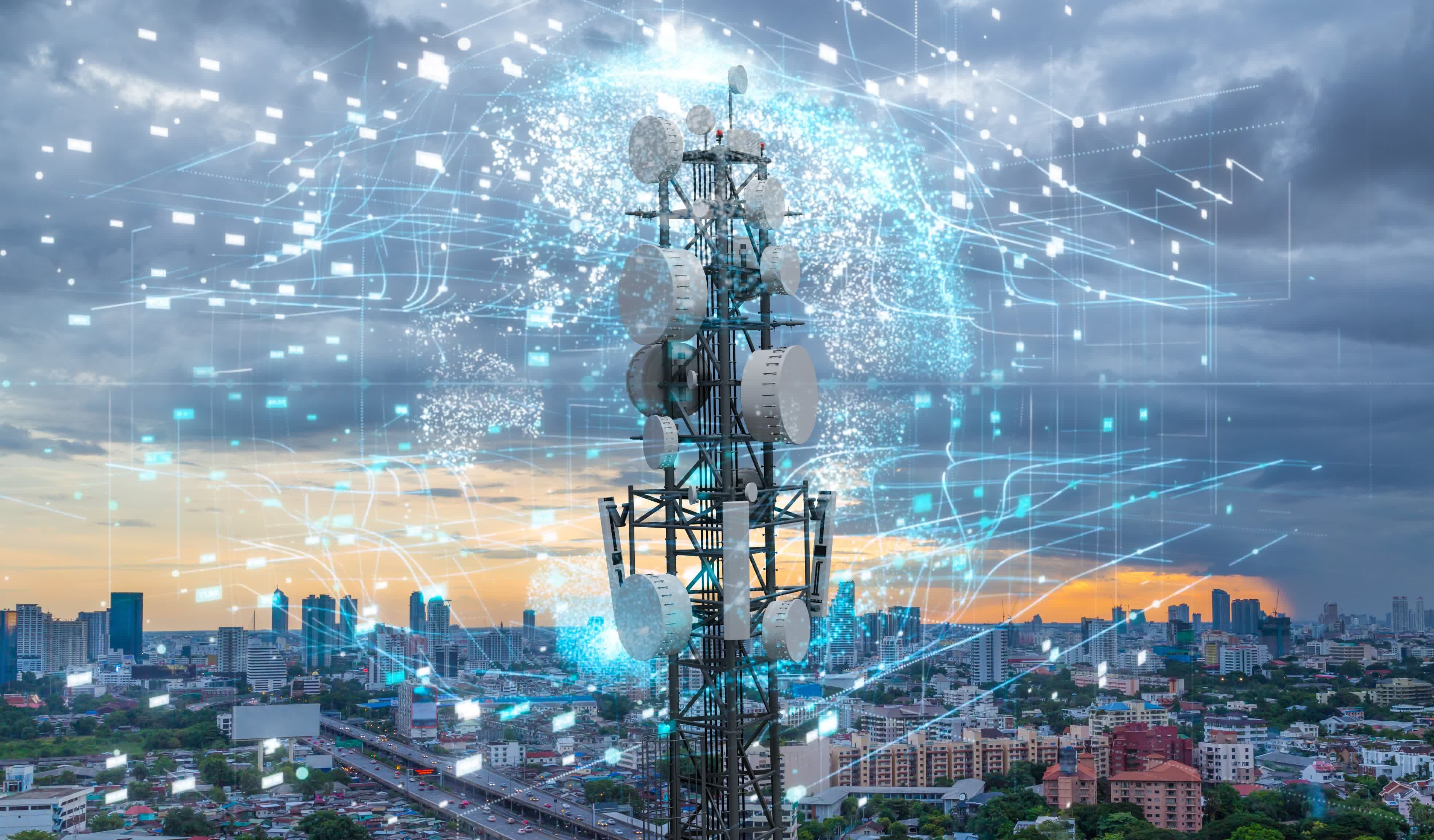Forward-looking: One of the most famous phrases about the value of networks came from Sun Microsystems' Scott Gage in 1984 when he declared that "the network is the computer." That long-time Sun tagline referred more to the value of connecting computers together and the concept of thin clients attaching to a centralized computing infrastructure than cellular networks. Nevertheless, it remains a prescient, pithy synopsis of where the computing and telecom worlds have been headed for the last three decades.
As it turns out, that phrase looks to be a remarkably good summary of a lot of the biggest news coming from this year's MWC trade show in Barcelona as well. While it's not feasible to put all the announcements from multiple vendors at a huge trade show into a single theme, the idea that 5G networks around the world are essentially morphing into a cloud-connected, general purpose computing infrastructure running specialized applications does seem to encompass a lot of the show's news.
To start with, the GSMA's own surprising debut of the Open Gateway Initiative points strongly in this direction. An industry association of the world's largest telco carriers, the GSMA isn't typically thought of as the organization driving technical standards (that's the 3GPP's job).
With this Open Gateway effort, they've garnered the support of 21 large worldwide carriers, including AT&T, Deutsche Telekom (T-Mobile's German parent), Verizon, China Mobile, Orange, Telefonica and Vodafone among others, to agree to a new set of open-source APIs for key network services such as location, eSIM support, quality of service and more.
In addition, they're kicking off with the backing of AWS and Azure cloud computing businesses. Working together, if it all goes as planned, these APIs and the related Camara open-source project essentially create a global mobile platform – separate from mobile phone operating systems – upon which developers of all shapes and sizes can start building new applications. It's early days, but the potential impact of this, particularly for carriers to start monetizing services on their very expensive 5G networks, could be huge. This is definitely a development worth watching.
Another way to interpret the "network is the computer" theme is through the increasingly important and popular concepts of Virtualized RAN or vRAN, and Open RAN or O-RAN, which both allow key network functions to run on traditional computer servers locally or in the cloud. Not only was there a great deal of partnerships and specific product news about vRAN and O-RAN coming from the show, but there were also arguably several interesting evolutions of the concepts being discussed by traditional network equipment vendors like Ericsson, the newly rebranded Nokia, and Samsung Networks among others.
This development is rather ironic in that one of the original arguments for Open RAN was to break away from the constraints of the proprietary hardware systems that some of these companies sold. In reality, however, it reflects that even these companies have recognized the flexibility and economic value of putting some of the core network functions and other capabilities that their hardware used to do in software form. It's essentially an acknowledgement that even in the world of multi-vendor O-RAN, the large network equipment providers still have an important role to play.
Samsung Networks, for example, debuted several new software tools that can run on general-purpose hardware. The company's vRAN 3.0 enables up to 3x higher throughput on Massive MIMO radios and offers several power efficiency enhancements, including sleep mode for low traffic situations and an energy saving function that intelligently analyzes data traffic and adjusts power usage automatically. These types of power usage reduction features are important for carriers, because telco networks consume huge amounts of electricity, making them eager to find ways to reduce that power consumption. Samsung Networks also announced updates to its Cloud Orchestrator, which is intended to help optimize and automate the deployment of its vRAN software and manage the hundreds of thousands of cell sites on which it is deployed. The latest update also incorporates support for private 5G networks as well as public networks.
From a computing perspective, Intel debuted a new iteration of its latest server chip (codenamed Sapphire Rapids) that specifically incorporates hardware acceleration for telco-related software and workloads. Officially dubbed "4th-gen Intel Xeon Scalable processors with Intel vRAN Boost," Intel claims the new platform can deliver the same performance on Level 1 packet processing as the best plug-in accelerator cards with the added benefits of lower power consumption and not requiring software to be developed for the proprietary chip architectures used in those cards. Along with Samsung Networks, Intel put some meat behind those claims by demoing what they said was the first 1 Tbps performance on a 5G User Plane Function (UPF) connecting data packets from the RAN to the 5G network core.

Cisco also had a number of big announcements at MWC 2023, including the launch of its IoT Mobility Services Platform, intended to allow companies to more easily manage a wide variety of devices and connected sensors, regardless of the underlying types of wireless technologies used to connect them. The goal is to simplify this often confusing and frustrating process. Speaking of simplification, the company also announced several partnerships with companies like Intel, NTT and NEC to make the process of getting private 5G networks installed as easy as possible.
While not directly tied to the "network as the computer" theme, some of the most intriguing news from Cisco was the debut of new Meraki gateways for enterprise 5G networks. One of the key challenges that early adopters of private 5G networks have faced has been the difficulty of managing the network with the staff and skillsets they have in house. The launch of the MG51 should go a long way to helping address that problem by bringing the ease of use that Meraki WiFi gateways/routers are known for to the less understood world of private 5G. In addition, Cisco and T-Mobile for Business announced a partnership to bring these MG51 gateways to businesses in conjunction with T-Mo's Managed Services offering. This enables T-Mobile to offer a fixed wireless access (FWA) cellular-based internet connectivity solution to small and medium-sized businesses around the US.
Google Cloud had three network offerings aimed at the network transformation trends underlying and inherent in the "network is the computer" theme and exemplifying the increasing role that big cloud providers are starting to play in the telco world. Telecom Network Automation tackles multi-site deployment, management and automation by using cloud-native Kubernetes-based tools that are at the heart of the company's cloud operations. Telecom Data Fabric offers tools to help collect information on data usage across the network, which potentially can be used for monetizing services. Finally, as its name suggests, Telecom Subscriber Insights automation data collection on users of the network, with AI-powered analytics that telcos can use to promote services and improve engagement and retention.
All told, there was a tremendous amount of 5G network-related news from MWC 2023, many of which demonstrated a clear intermingling of traditional IT "computing" vendors with those who have specialized in pure network infrastructure equipment in the past. The partnerships are enabling a more powerful and more unified set of offerings that have the potential to combine the best of both worlds. When the 5G cellular network becomes the computer, interesting things are bound to happen indeed.
Bob O'Donnell is the founder and chief analyst of TECHnalysis Research, LLC a technology consulting firm that provides strategic consulting and market research services to the technology industry and professional financial community. You can follow him on Twitter @bobodtech.

